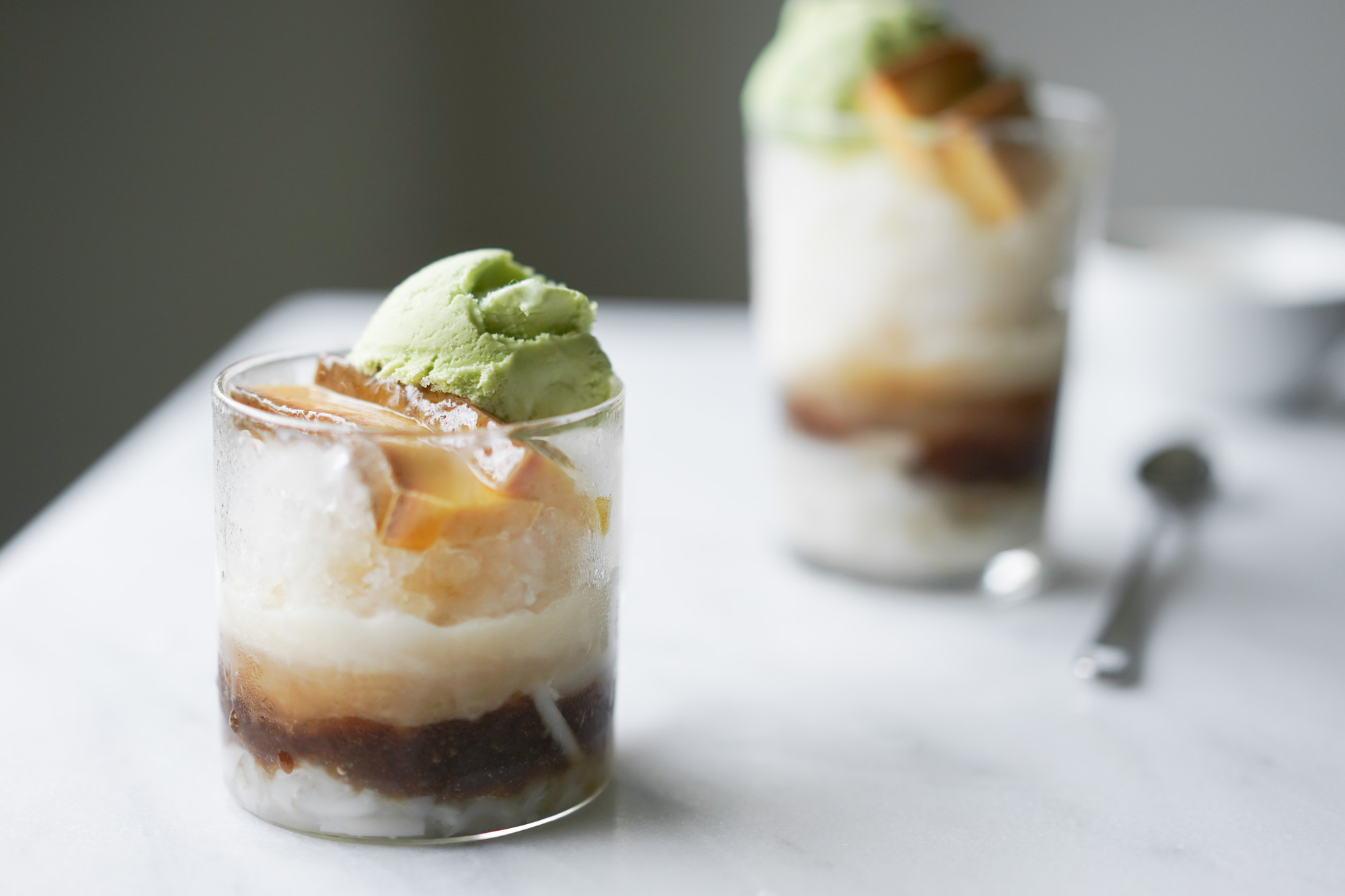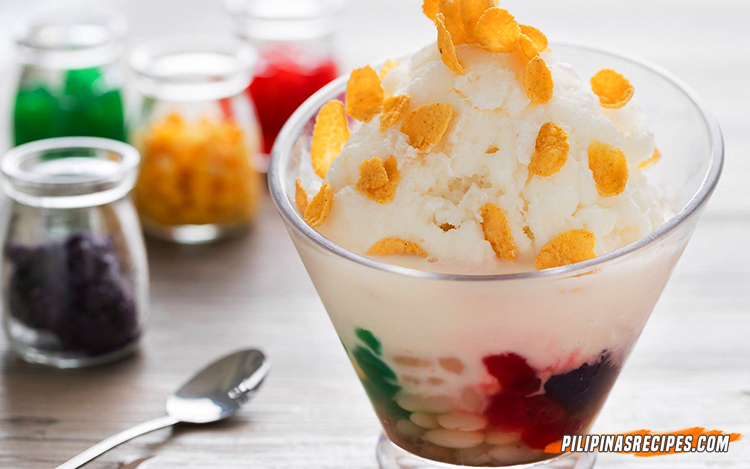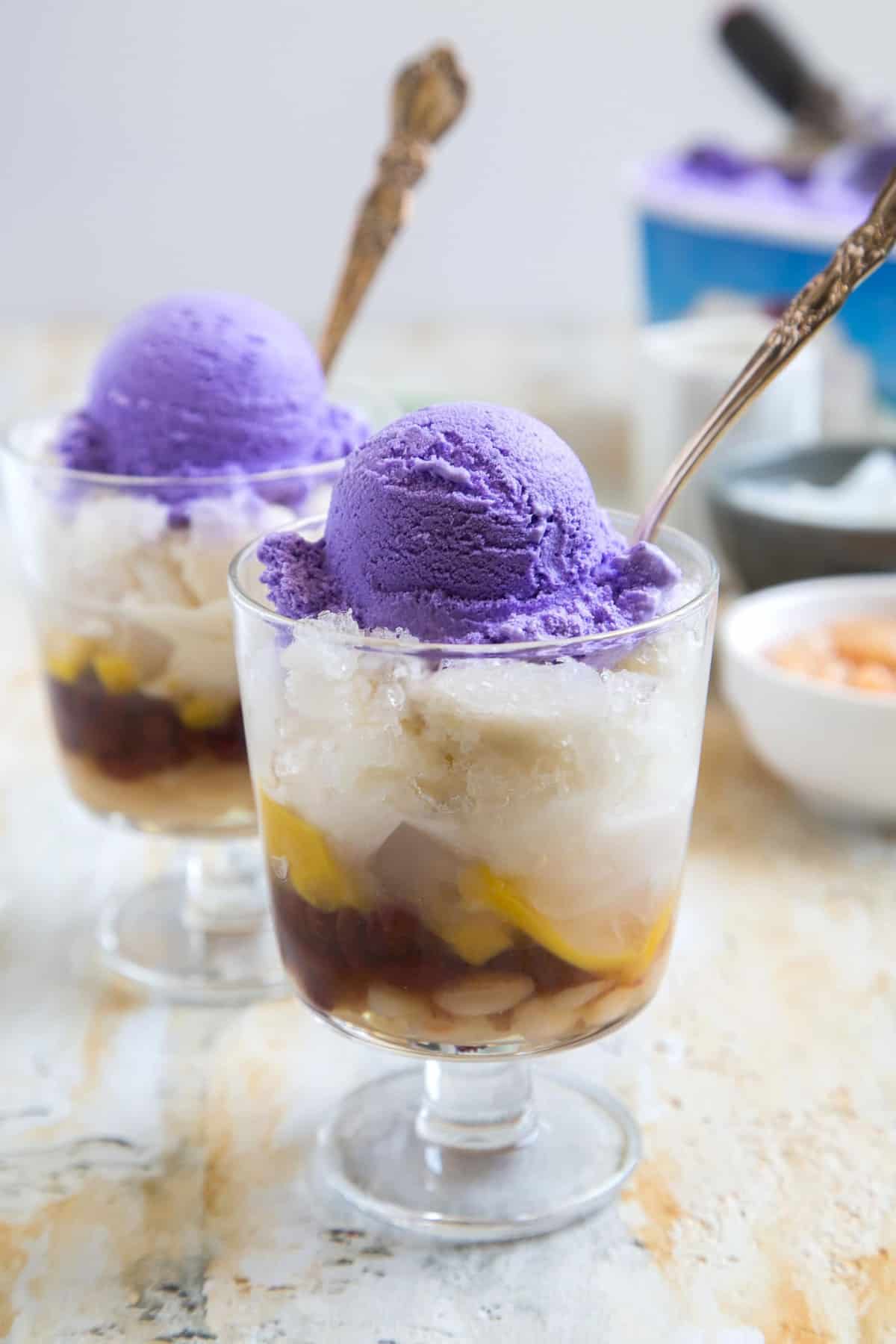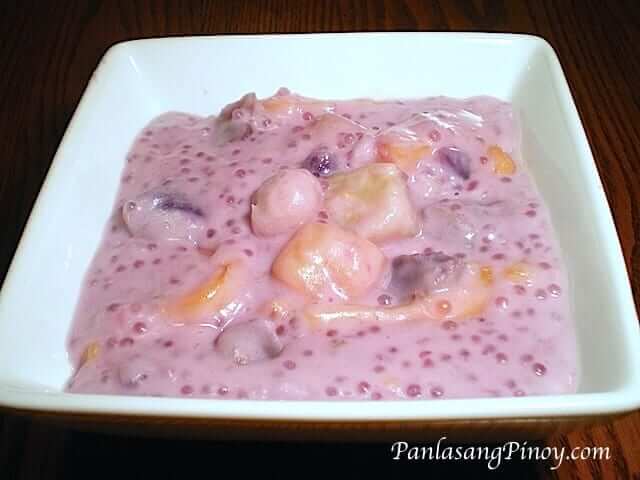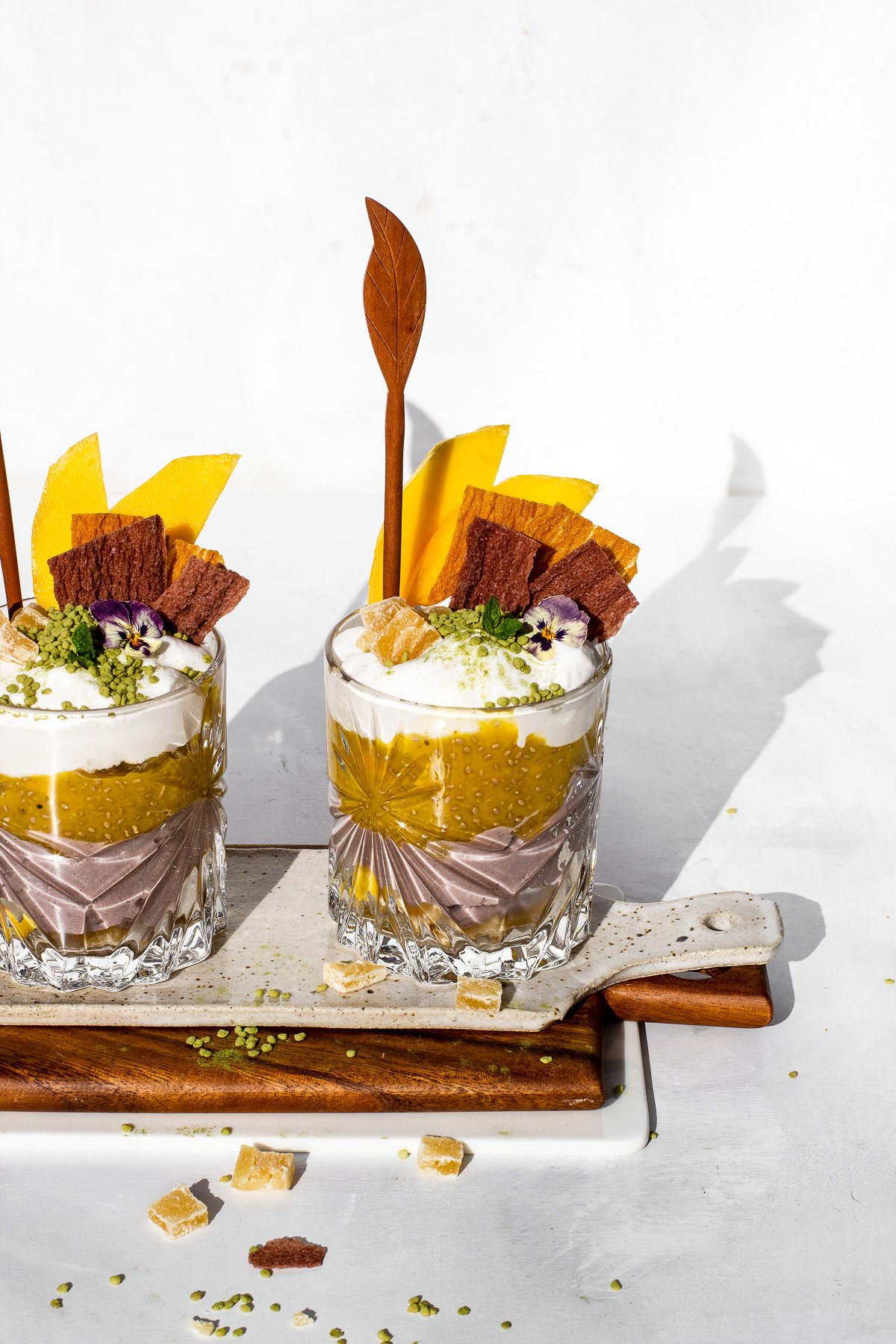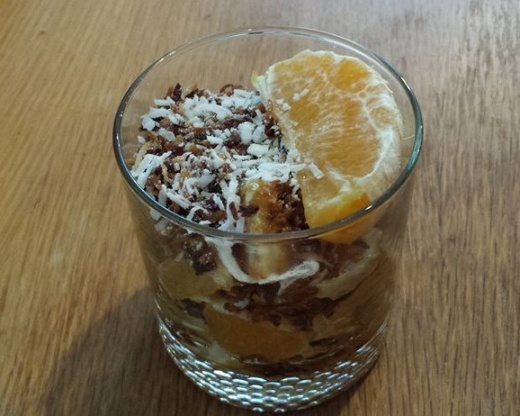Halo-halo
halo halo, haluhalo
Halo-halo, also spelled haluhalo, Tagalog for "mixed", is a popular cold dessert in the Philippines made up of crushed ice, evaporated milk or coconut milk, and various ingredients including side dishes such as ube jam , sweetened kidney beans or garbanzo beans, coconut strips, sago, gulaman (agar), pinipig, boiled taro or soft yams in cubes, flan, slices or portions of fruit preserves and other root crop preserves. The dessert is topped with a scoop of ube ice cream. It is usually prepared in a tall clear glass and served with a long spoon. Halo-halo is considered to be the unofficial national dessert of the Philippines. The origin of halo-halo is traced to the pre-war Japanese Filipinos and the Japanese kakigōri class of desserts. One of the earliest versions of halo-halo was a dessert known locally as monggo con hielo (derived from the Spanish Filipino dessert maíz con hielo) or mongo-ya, which consisted of only mung beans (Tagalog: monggo or munggo, used in place of red azuki beans from Japan), boiled and cooked in syrup (minatamis na monggo), served on top of crushed ice with milk and sugar. Over time, more native ingredients were added, resulting in the creation and development of the modern halo-halo. One difference between halo-halo and its Japanese ancestor is the placement of ingredients mainly under the ice instead of on top of it. The original monggo con hielo, type can still be found today, with similar variations using sweet corn (mais con hielo) or saba bananas (saba con hielo).
Source: Wikipedia
Recipes
